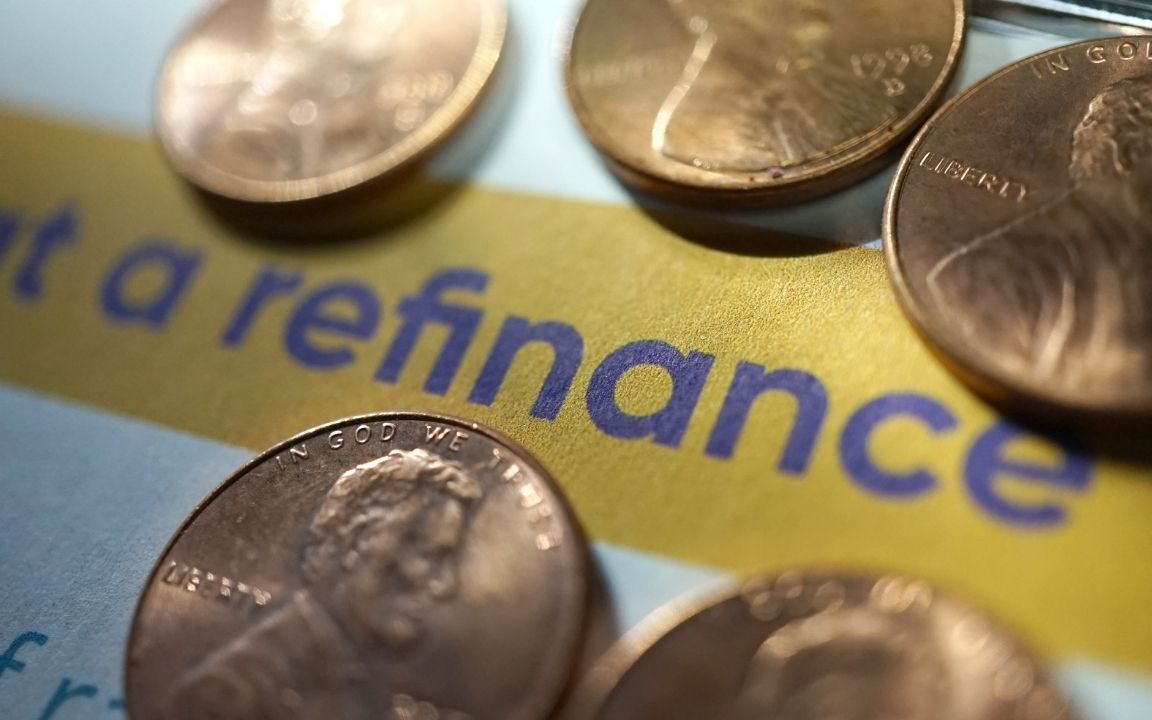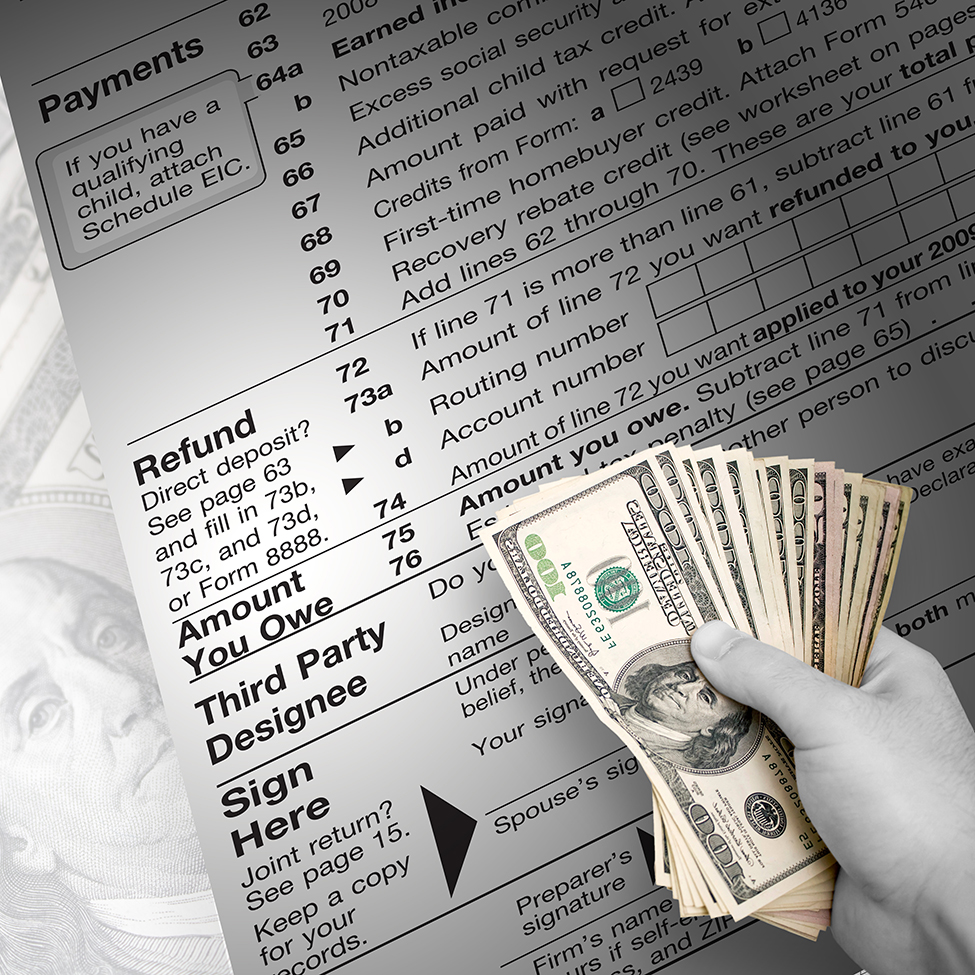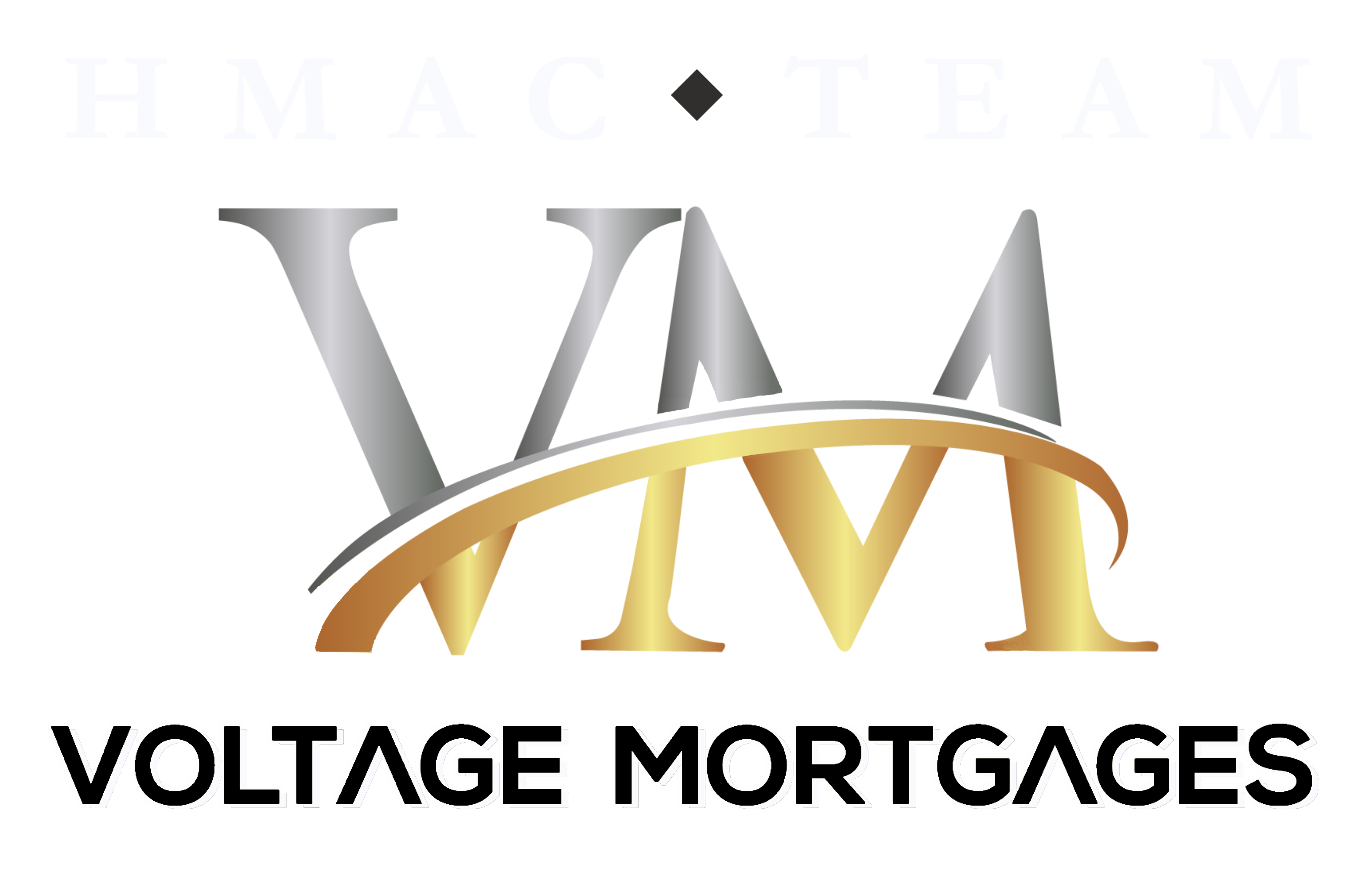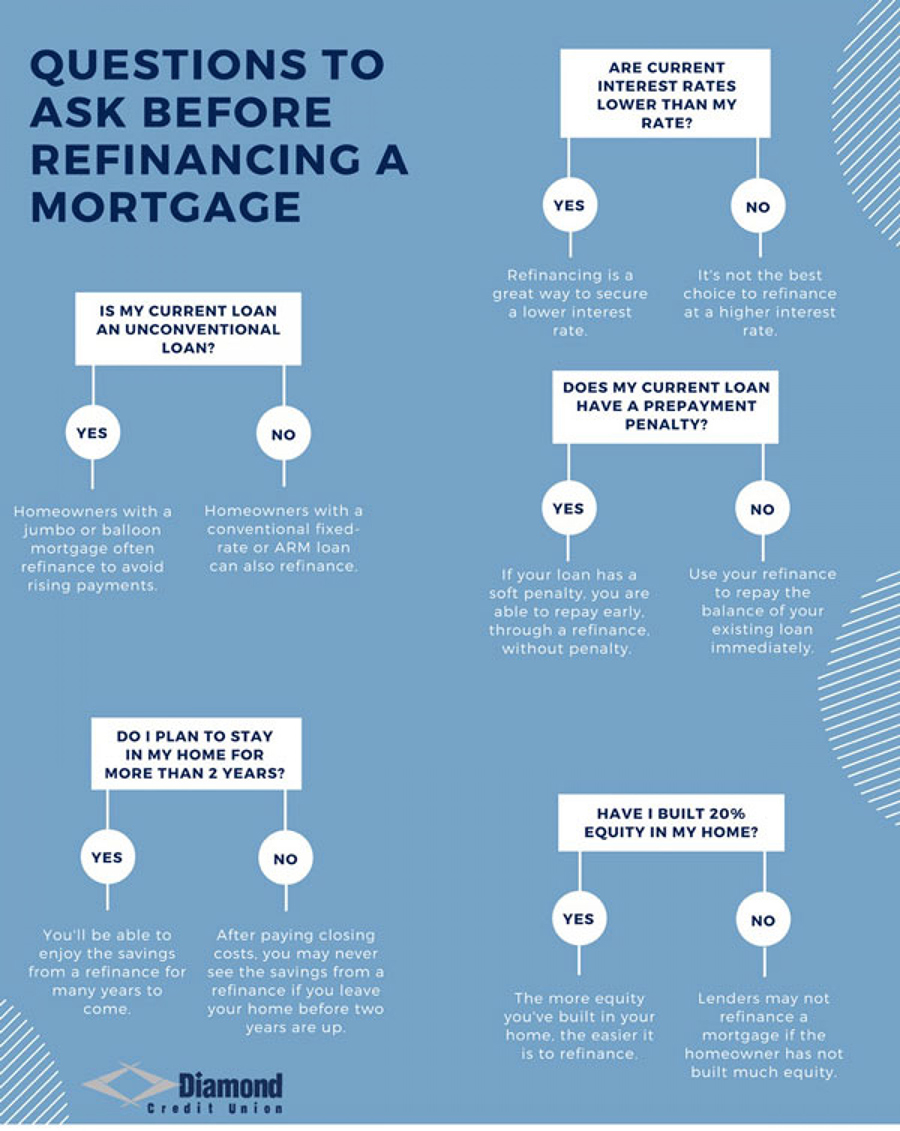Your home loan is a big part of your life. Let's Refinance Your Home Loan
Refinancing your home may not be your favorite thing on your “to-do” list to tackle, but the fact is that it may be the most impactful. Refinancing to a more favorable term or lower interest rate can save significant amounts of money over the life of your loan. Or, changing your financing can free up the cash you may need in pressing situations, like renovations, college tuition or unplanned home repairs.
We’re here to make the process less intimidating and more understandable. Even if you’ve been through the mortgage process before, you may not be aware of all of the specialized mortgage products and options that can be tailored to help you to either save money or gain access to funds at lower interest rates than the average credit card. At HMAC Team Voltage Mortgages we can help cross this daunting task off your “to-do” list.

Steps to Refinancing Your Mortgage
Congratulations! You’ve evaluated your finances and want to make improvements to reach your goals. Before beginning the loan process, it is important to do your research. There are many steps involved to make sure you have a smooth and successful experience. Start by pre-qualifying for your refinance loan. Simply fill out the pre-qualification form online and a licensed loan officer will contact you within 24 hours.
Pre-Qualify
What is pre-qualification?
Pre-qualification determines your ability to repay a refinance loan based on information you provide. Your assets and income are reviewed to establish the maximum loan amount you can afford and how much you may be able to borrow.
Understanding Your Credit Report
Your credit score is not the only factor in getting approved for a mortgage, but it is an important part of determining what you will be able to qualify for.
- Check your own credit score before meeting with a lender.
It is important to make sure that your score is accurate when applying for a loan. You can get a free credit report once a year online by visiting annualcreditreport.com. - Verify report for accurate information.
Report and dispute inaccuracies with the credit bureau. Disputes in process may delay loan approval. - Paying down high credit balances may positively affect your credit score.
By paying down applicable lines of credit before applying for a loan, you may qualify for getting approved for a better interest rate. - Set up payment plans.
Call your creditors and work out a budget-friendly payment plan on delinquent accounts prior to applying for a loan. Work out a plan that won’t harshly affect your debt-to-income ratio but will still let lenders know you are serious about be credible for your debts.
Meet Your Loan Officer
Give us a call today to discuss your options and get started. Together, we’ll recommend a mortgage product that will meet your needs.
If you want to get an idea of what kind of product may be right for you, you can visit our loan types, which will explain many of our products. But the best thing to do is to speak with one of our licensed loan originators, who will assess your financial situation and make a recommendation.
Start The Refi Process
By now, you’ve selected your lender and you’ve gotten pre-approved. It is time to start the loan process! Meet with your licensed loan officer to help you gather paperwork and submit your mortgage application.
Gather all necessary identification
and paperwork
Identity & Income Information
- Your full legal name, Social Security number, and date of birth. A copy of your Social Security card may be required.
- Your phone number, email address, and residential mailing addresses for the past two years.
- Your primary and secondary income and sources.
- Your government-issued photo ID.
- All employer names, addresses, and phone numbers for the past two years.
- The values of your bank, investment, and retirement accounts, as well as any other asset accounts.
- Your monthly debt obligations.
- The address of the mortgaged property, year built, estimated home equity amount, and home value.
- History of annual property taxes, homeowners insurance, and homeowner association dues (if any).
Income Information for Self-Employed Borrowers
- Your personal and business federal tax returns for the past three years.
- A year-to-date profit and loss statement.
- A complete list of all business debts.
Credit Information
- A letter of explanation for any late payments, judgments, collections, or other derogatory credit history items.
- Source of funds documentation for any large deposits on asset or bank statements.
- The judicial decree or court order of each obligation due to legal action.
- Bankruptcy/discharge papers for all bankruptcies in your credit history.
- Payment histories for utilities, cable TV, internet, phone, auto insurance, and any other expenses.
Submit your application
Fill out and sign the loan application — including the attached fair lending notice, loan info sheet, and credit authorization. Note: Do not use whiteout on this paperwork. Mistakes should be crossed out and initialed.
Review your Loan Estimate
This document contains important details about the loan you are applying for including estimations of your interest rate, monthly payment, closing costs, taxes, insurance and any prepayment penalties. The lender must provide this to you within three business days of receiving your application.
Income & Tax Documentation
- IRS Form 4506-T — request for tax transcript; must be completed, signed, and dated.
- Your W-2s for the past two years.
- Pay stubs for the past 30 days.
- Your federal tax returns (1040s) for the past two years.
- Your most recent two months’ asset and bank statements for all accounts on your application (all pages, including blank pages).
- A written explanation if you have been employed less than two years or if employment gaps exist.
- A purchase contract signed by all parties.
- Homeowners insurance information, including the agent’s name and phone number.
Some “streamline” refinance loan products, like FHA Streamline Refinance Loans or VA Interest Rate Reduction Refinance Loans, may not require all of this paperwork. And in other cases, this list may not be all-inclusive, but you may be able to expedite the process by having these documents on hand.
Review your Good Faith Estimate
This is the list of the settlement charges that you must pay at closing. The lender must provide this to you within three business days of receiving the mortgage application.
Clear any additional requests from underwriting
Underwriting is the department that reviews all of your identification, paperwork, and credit history to asses if you will qualify for the desired loan. They determine the terms of the loan and will occasionally require extra documents to fully understand your background and make their decision. It is important to make yourself available during the underwriting process and to respond to any requests promptly and thoroughly.
Consider The Home Appraisal
When refinancing, not everyone is required to get a home appraisal. For example, if a person has an FHA loan, and wants to refinance into another FHA loan for the purpose of lowering monthly payments, a home appraisal won’t be required as long as previous mortgage payments were all made on time. However, it could be in your best interest to get a home appraisal for your refinance, because the risk is that the lender doesn’t assign a high enough value to your home, thereby restricting the type of mortgage products that may be available to you. An accurate appraisal will prevent the lender from basing the refinance loan on too small of a home value.

Take the time to get commitments in writing.
Make sure the amount, payments, rate lock, and other details are clearly stated in writing in a signed document.
Set Closing Date, Time and Location
Closing usually takes place in the presence of a public notary, and if you have a co-applicant, they will also need to be present.
You should be prepared for several things:
- Review the final documents. Make sure the rates and amounts are what you have agreed to.
- Bring a cashier’s check to cover the closing costs and down payment. Personal checks are usually not accepted.
- Sign the loan and be prepared to show photo ID and possibly a Social Security card.
Review your closing disclosure
The lender must provide this to you at least three business days before you close your loan. This document contains the final terms of your loan. Use this timeframe to review it thoroughly and compare it to your Loan Estimate. Don’t be afraid to ask your lender questions if you are unclear about the terms!
Make the Most of Second Chances
Congratulations, you can cross “refinancing” off your “to-do” list, but more importantly, you’ve either uncovered ways to save, or ways to more easily manage the expenses that life has in store for you, and either way, the financial benefits are well-worth the effort.
HMAC Team Voltage Mortgages is here to offer you guidance on any future questions or situations that may arise with your loan. A licensed loan officer will always be available to help you refinance, use your home equity, or even purchase additional properties to build your investment portfolio.
Guides and Resources
Now that you understand the process that will take place, take the time to understand other benefits and aspects of refinancing. Check out these helpful links to learn more about the resources available to help guide you throughout the loan process.
- Refinance – Learn about the benefits of refinancing your existing mortgage.
- Mortgage Glossary – Learn common mortgage terms that will be relevant to your home buying experience.
- Refinancing FAQs – Consider the most frequently asked questions that our clients ask when refinancing their mortgage.
- Refinancing to Pay Down Debt – Check out these specific points about applying your home equity toward debt consolidation.
- Refinancing to Protect Home Equity – Check out these specific points about refinancing in order to protect your home equity.
Are You Ready To Buy A Home?
Whether you’re in need of a lower monthly mortgage, or a fixed interest rate we can help. Finding the right type of loan is the next step. Complete the general statement below with the choice that most closely aligns to your situation.
I want to refinance my home and I…
- Want to stabilize my payments with a fixed rate
If your existing mortgage has an adjustable rate and you’re looking for the security of a loan payment that won’t change as rates change, then refinancing to a fixed-rate mortgage might be right for you.
Learn more - Want a rate that may be lower initially or could decrease during the term
If circumstances have changed and you don’t plan on living in your home long term, refinancing to the terms of an adjustable-rate mortgage might be right for you.
Learn more - Am a veteran
If you’re a veteran, then a VA Interest Rate Reduction Refinance Loan (IRRRL) can help you lower your existing interest rate by refinancing your VA home loan, or convert from a VA Adjustable Rate Mortgage to a VA Fixed Rate Mortgage.
Learn more - Live in a rural area and currently have a USDA home loan
If you currently have a USDA rural home loan, you may be eligible for a USDA Streamline Refinance which can help lower your interest rate and monthly mortgage payments.
Learn more - Currently have an FHA home loan
If you already have an FHA home loan, you may be able to obtain an FHA Streamline Refinance or FHA cash-out refinance. You can lower your monthly principal and interest payments and convert your adjustable rate mortgage to a fixed rate mortgage.
Learn more
Related Information
A USDA Rural Home Loan allows you to own a home away from the city with up to 100% financing....
Which conventional home loan is right for you? Learn about the pros and cons of fixed rate...
From 10 year fixed rate mortgages to 30 year fixed rate mortgages, learn about what fixed...

